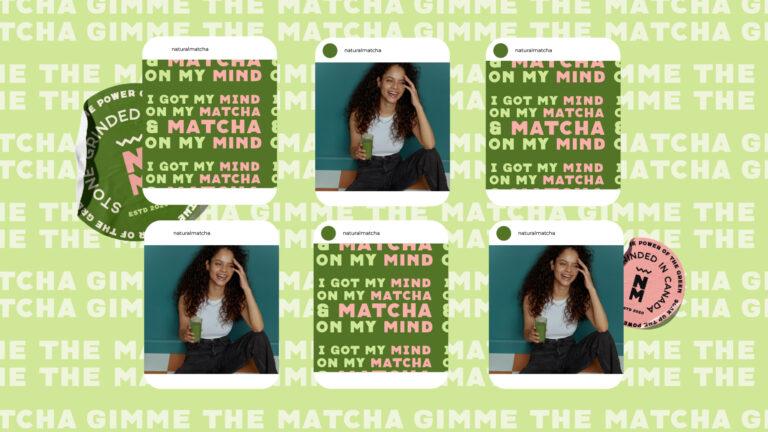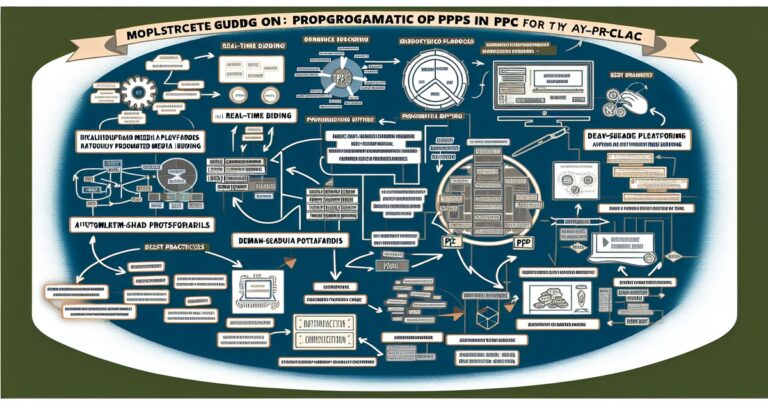The field of graphic design is all about creating visual content to communicate messages, ideas, and thoughts. As a graphic designer, your work is your intellectual property, which means it is the product of your creativity and hard work. Copyright and intellectual property are important concepts in graphic design that protect the rights of designers and ensure they receive recognition for their work.
Definition of Copyright and Intellectual Property in Graphic Design
Copyright refers to a set of laws that grant creators exclusive rights over their artistic or literary works. These works can be anything from books, music, films to visual art like paintings, photographs or designs.
In the context of graphic design, copyright law protects original works such as logos, branding designs, advertisements brochures – essentially anything that has been designed with the intention to communicate a message. Intellectual property (IP) includes all intangible products created by an individual’s mind such as inventions or discoveries.
In other words, IP refers to creations of the human intellect like ideas or concepts that are unique and not commonly known. As graphic designers create artwork that involves creativity and originality in design elements like typography, color choices etc., they own intellectual property rights over those creations.
Importance of Copyright and Intellectual Property in Graphic Design
Graphic designers have to deal with clients from different fields who might decide to use their work without permission or credit them for their contribution. This can lead to loss of income for designers who rely on their skills as a means of earning money for themselves or their businesses.
Copyright protection ensures that creators are given credit for their work while also serving as a deterrent against theft. Similarly, protecting one’s intellectual property is equally important because it gives designers ownership over the original ideas they create rather than having someone else take credit for them.
It also helps them avoid costly legal battles if someone decides to steal their idea or part of their design. By protecting their copyright and intellectual property, designers can have peace of mind knowing that they are the sole owners of their creations.
Overview of the History of Copyright and Intellectual Property in Graphic Design
The concept of copyright began to emerge in the 16th century when printing became widespread. At that time, England’s Queen Mary I granted a royal charter to printers that allowed them a monopoly on book printing for 14 years. In America, the first copyright law was passed in 1790, which protected books, maps and charts for 14 years with an option to renew once.
The history of intellectual property law can be traced back even further to ancient civilizations such as Greece, China and Egypt who recognized the importance of protecting ideas and inventions. However, it wasn’t until later in history during the Industrial Revolution that patent laws were created to protect inventions from being stolen by competitors.
As graphic design emerged as a profession in its own right during the 20th century, copyright laws expanded to include all types of visual art including graphic designs. In today’s digital age where content is easily accessible online and can be easily copied or distributed without permission, it is more important than ever for designers to understand these laws and take steps to protect their work.
Understanding Copyright Law
Definition of Copyright Law
Copyright law is a legal concept that grants the creator of an original work exclusive rights to use and distribute their work. This means that the creator has the ability to control how their work is used, reproduced, and distributed. Copyright law applies to a wide range of works including literary, musical, dramatic, and artistic works such as graphic design.
Types of works protected by copyright law
The types of works that are protected by copyright law include original creations such as paintings, photographs, illustrations, sculptures, graphics designs, and literary works such as books or articles. In addition to these tangible forms of creative expression, copyright laws also protect intangible forms of creative expression like music and film.
Duration of copyright protection
The duration of copyright protection varies depending on several factors including the type of work being protected and when it was created. In general, for graphic design works created after January 1st 1978 in the US., copyright lasts for the life of the author plus 70 years after their death. For works created before this date or outside the US., different rules apply.
Fair Use Exceptions to Copyright Law
Fair use is an exception to copyright laws that allows people to use copyrighted material without seeking permission from its owner or paying for it under certain circumstances. The four factors considered when determining fair use include:
1) The purpose and character of your use 2) The nature of the copyrighted work
3) The amount used 4) The effect on potential marketability
Examples where fair use may apply in graphic design include using a copyrighted image for educational purposes or creating a parody piece. However not all cases will be considered fair use so it’s important to note that legal advice may still be necessary even if you believe your usage is fair use.
Protecting your Work: Registering for Copyright Protection
As a graphic designer, it is important to protect your creative work from being used without your permission or compensation. One of the best ways to do this is by registering your work for copyright protection. While copyright protection exists automatically upon creation of a work, registration provides additional legal benefits that can prove invaluable in protecting your intellectual property.
The process for registering for copyright protection
The process for registering a copyright is fairly straightforward and can be done online via the U.S. Copyright Office website. You will need to fill out an application, which includes providing basic information about yourself and the work you are seeking to register. Additionally, you will need to submit a copy of the work itself, which can be uploaded electronically through the website.
Once your application has been submitted, it typically takes several months for the Copyright Office to review and approve it. Upon approval, you will receive a certificate of registration that serves as proof of ownership and provides legal benefits in case of infringement.
Benefits of registering your work for copyright protection
Registering your creative works provides several key benefits over just relying on automatic copyright protection: 1. Public record: Registration creates an official record of ownership that is available to the public through the Copyright Office’s online database.
2. Statutory damages: In cases where someone infringes on your copyrighted material, registering the material before or within three months after publication allows you to seek statutory damages. 3. Legal fees: If someone infringes on your copyrighted material and you need to sue them in court, having registered copyrights can make it easier to recover attorney’s fees and court costs.
Consequences for failing to register your work
While automatic copyright protection exists upon creation of a work, not registering it can limit legal options if someone else uses or copies it without permission. Without registration, you may have a more difficult time proving ownership and proving that the infringing party was aware of your ownership of the material. Additionally, you will not be eligible for statutory damages or reimbursement of legal fees.
Registering your creative work for copyright protection is an important step in protecting your intellectual property as a graphic designer. By following the simple registration process, you can enjoy additional legal benefits that can prove invaluable in cases of infringement.
Trademark Law and Brand Identity
Definitions and Examples of Trademarks
A trademark can be any word, name, symbol, or device (or any combination thereof) that is used to identify and distinguish goods or services from those sold or provided by others. A trademark can be a logo, a slogan, or even the unique design of packaging.
For example, the golden arches of McDonald’s are a trademarked symbol that identifies the brand. Similarly, Nike’s “Just Do It” slogan is also a registered trademark.
In addition to trademarks, there are also service marks which are used to identify and distinguish services provided by one party from those provided by others. Examples of service marks include the American Express card design and MasterCard’s interlocking circles.
How Trademark Laws Protect Brand Identity
Trademark laws protect brand identity by preventing others from using similar marks that may lead consumers to believe they are associated with an established brand when they are not. The purpose of these laws is to eliminate confusion in the marketplace so that consumers can easily differentiate between competing brands.
Once a trademark is registered with the United States Patent and Trademark Office (USPTO), it gives the owner exclusive rights to use that mark in connection with their goods or services within their designated industry category. If another company uses a similar mark in connection with their own goods or services within that same category, this would be considered infringement on the original owner’s intellectual property rights.
The Importance of Protecting Brand Identity
Protecting your brand identity through trademarks ensures customers can identify your products among competitors in crowded marketplaces. Strong branding establishes trust with customers who return because they know they’re purchasing quality products from reliable sources.
Additionally, branding is an essential part of marketing campaigns since it works as shorthand among targeted audiences to associate your product with positive qualities like luxury, quality, or affordability. There is no more effective way to solidify the brand identity than with a trademark.
Failure to protect your brand identity can result in lost revenues, damage to your reputation, and customer confusion. The best way to avoid these issues is by developing a comprehensive branding strategy that includes registering trademarks and monitoring them regularly for infringement by competitors.
Copyright Infringement in Graphic Design
Graphic designers need to be aware of copyright law to avoid infringing on the rights of others. Infringement occurs when someone uses a copyrighted work without permission or authorization from the owner. This can include using images, logos, and other design elements that are protected under copyright law.
In graphic design, infringement can occur in several ways, including copying an image or design without permission, adapting an existing work without permission, or creating a derivative work that is substantially similar to an existing copyrighted work. It is important for designers to understand what constitutes copyright infringement so they can avoid it and protect their own intellectual property.
Examples of Copyright Infringement Cases in Graphic Design
There have been several high-profile cases involving copyright infringement in graphic design. One well-known case involved the logo for the 2012 London Olympics which was accused of being too similar to a logo created by a small British design firm. The designer claimed that the larger agency had copied her original concept and used it for their own purposes without credit or compensation.
Another case involved famous artist Shepard Fairey who was sued by The Associated Press over his iconic “Hope” poster featuring then-Presidential candidate Barack Obama during his 2008 campaign. Fairey used an AP photo as inspiration for his artwork but did not receive permission from the news organization before creating and distributing the image.
Consequences, Penalties, and Legal Action Against Infringers
The consequences of copyright infringement can be severe and include legal action against infringers. If found guilty of infringement, individuals may face fines as well as damages awarded to the owner of the copyrighted material. Additionally, if found liable for willful infringement, infringers may be required to pay up to $150,000 per violation.
Legal action against infringers can take many forms, including cease and desist letters, DMCA takedown notices, and lawsuits. In some cases, designers may be able to reach a settlement with the copyright holder to avoid legal action.
Graphic designers must be aware of copyright law to avoid infringing on the rights of others. Copyright infringement can occur in several ways, from copying an image without permission to creating derivative works that are substantially similar to existing copyrighted material.
The consequences of infringement can be severe and include legal action against infringers. By understanding these risks and taking steps to protect their own intellectual property, designers can create original works while respecting the rights of others.
Fair Use Doctrine in Graphic Design
What is Fair Use Doctrine?
Fair Use Doctrine is the provision in copyright law which permits the use of copyrighted work without permission from the owner under certain circumstances. Such use includes purposes such as criticism, comment, news reporting, teaching, scholarship and research. The doctrine aims to balance the interests of copyright owners with those of users or potential new creators while providing a limited exception to infringement liability under certain circumstances.
How does it apply to graphic design?
In graphic design, Fair Use Doctrine can be used for creating parody or satire works that comment on society, news events or politics. It also applies when an image is borrowed from a copyrighted work but is transformed into something new, such as when it’s used in collages or altered images that have different messages. Moreover, Fair Use Doctrine can apply to educational use where copyrighted materials can be used for classroom learning or research purposes.
Examples where Fair Use Doctrine is applicable
One example of Fair Use Doctrine in graphic design is Shepard Fairey’s famous “HOPE” poster that he created during President Obama’s 2008 campaign. Fairey took an Associated Press photograph and made it his own by adding color and changing the composition. The AP sued him for copyright infringement but he successfully claimed that his use of the image was transformative and fell under fair use.
Another example would be when artist Richard Prince copied several photographs from Patrick Cariou’s book “Yes Rasta” and altered them slightly before displaying them as part of his own art collection called “Canal Zone.” The court ruled that Prince’s works were transformative enough to constitute fair use. Designers may also find themselves applying fair use doctrines when creating logos inspired by existing ones or incorporating small parts of other designs into their own creations.
Conclusion
After a comprehensive review of copyright and intellectual property in graphic design, it is clear that these legal protections are crucial for designers and businesses alike. These laws help preserve originality and innovation while also promoting fair competition. By understanding the nuances of copyright law, protecting your work through registration, and respecting the trademarks of others, designers can create a thriving industry that benefits everyone involved.
However, it is important to remember that these laws are constantly evolving. As technology advances and new mediums for design emerge, copyright law will need to adapt to keep pace.
Additionally, as the world becomes more interconnected, international copyright treaties will become increasingly important in protecting creative works across borders. Despite the challenges ahead, designers should remain optimistic about the future of their industry.
With strong legal protections in place and an endless array of tools at their disposal, there has never been a better time to be a graphic designer. With dedication and perseverance, anyone can make a name for themselves in this exciting field while also contributing to the ongoing development of creative culture around the world.









